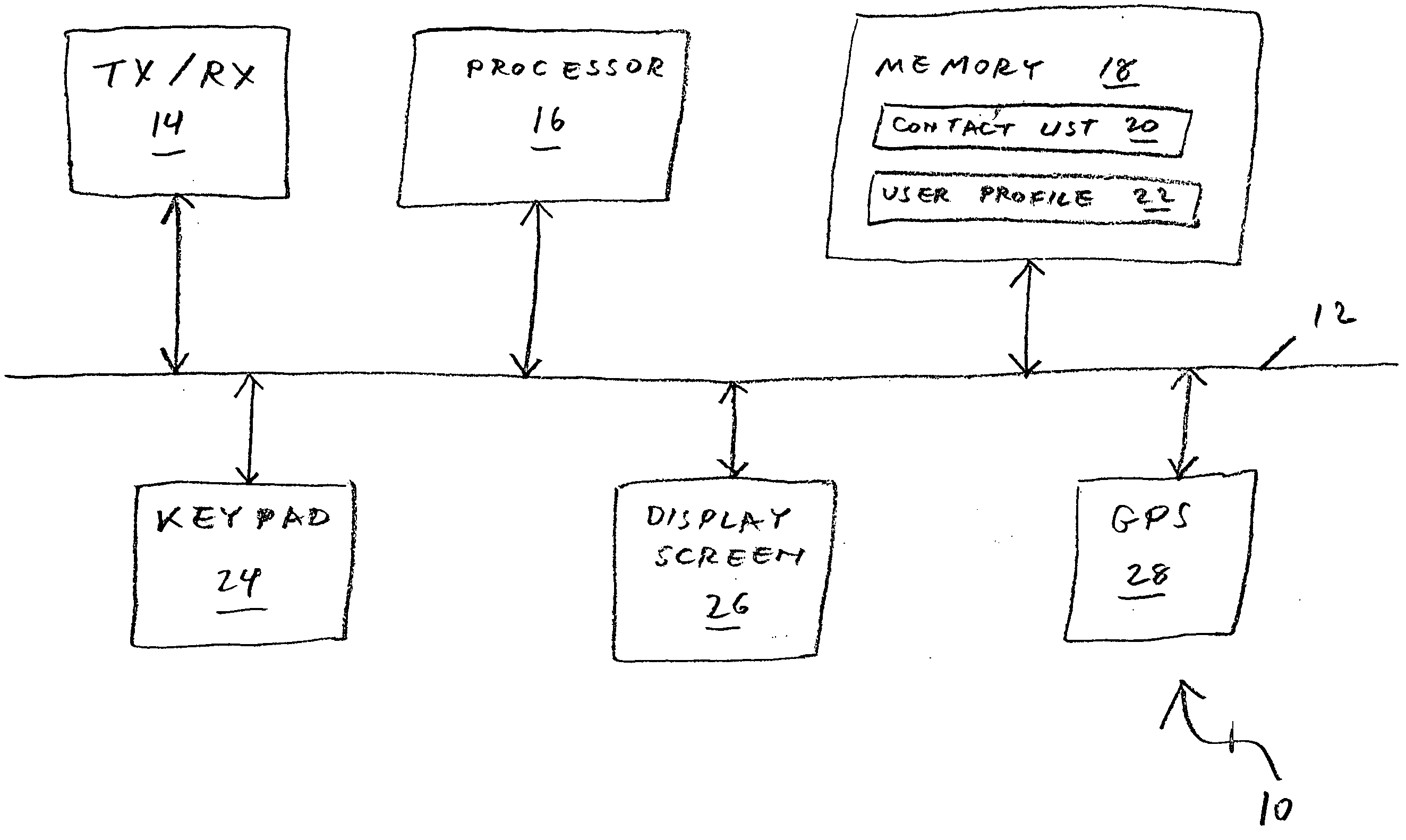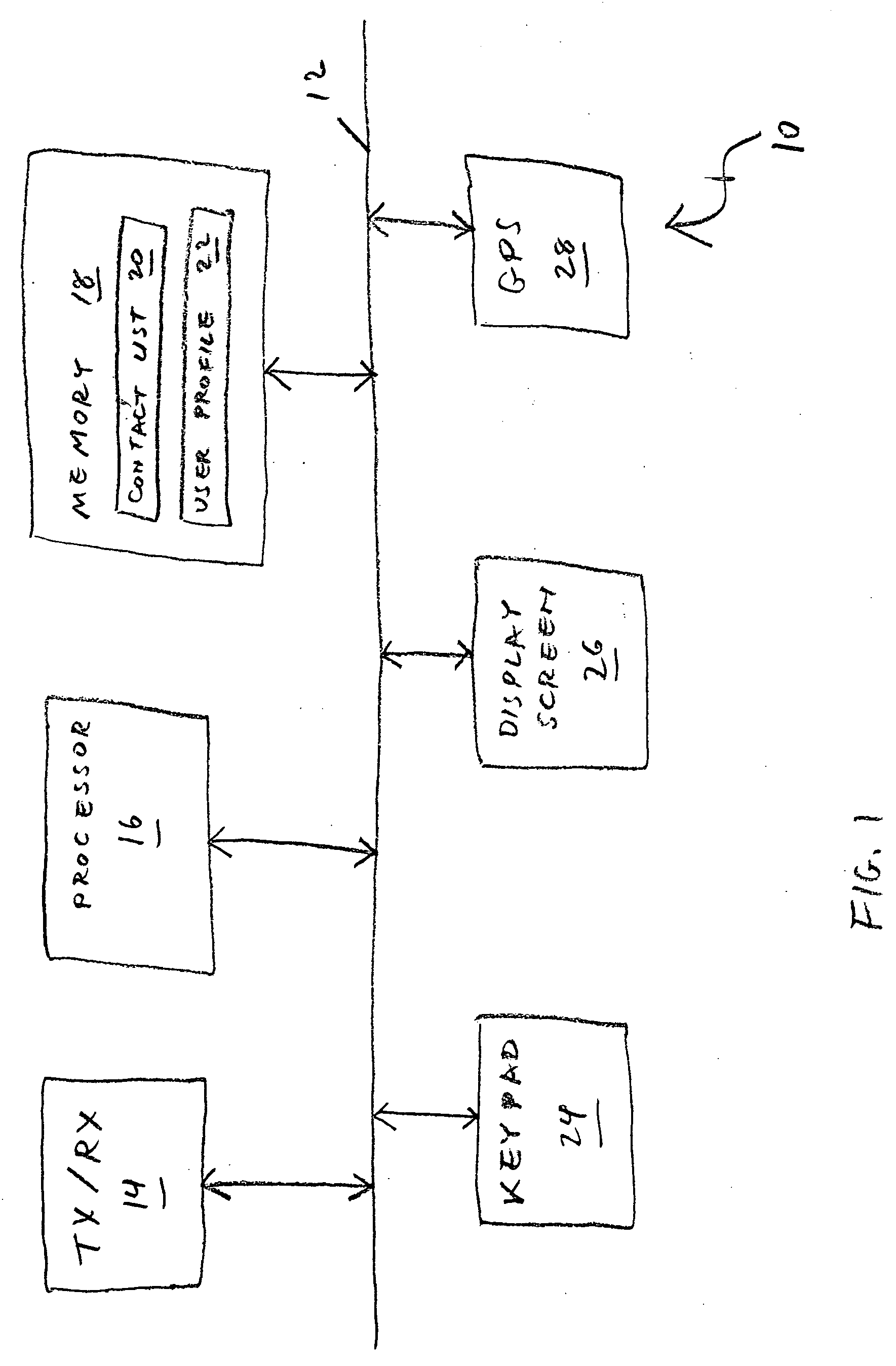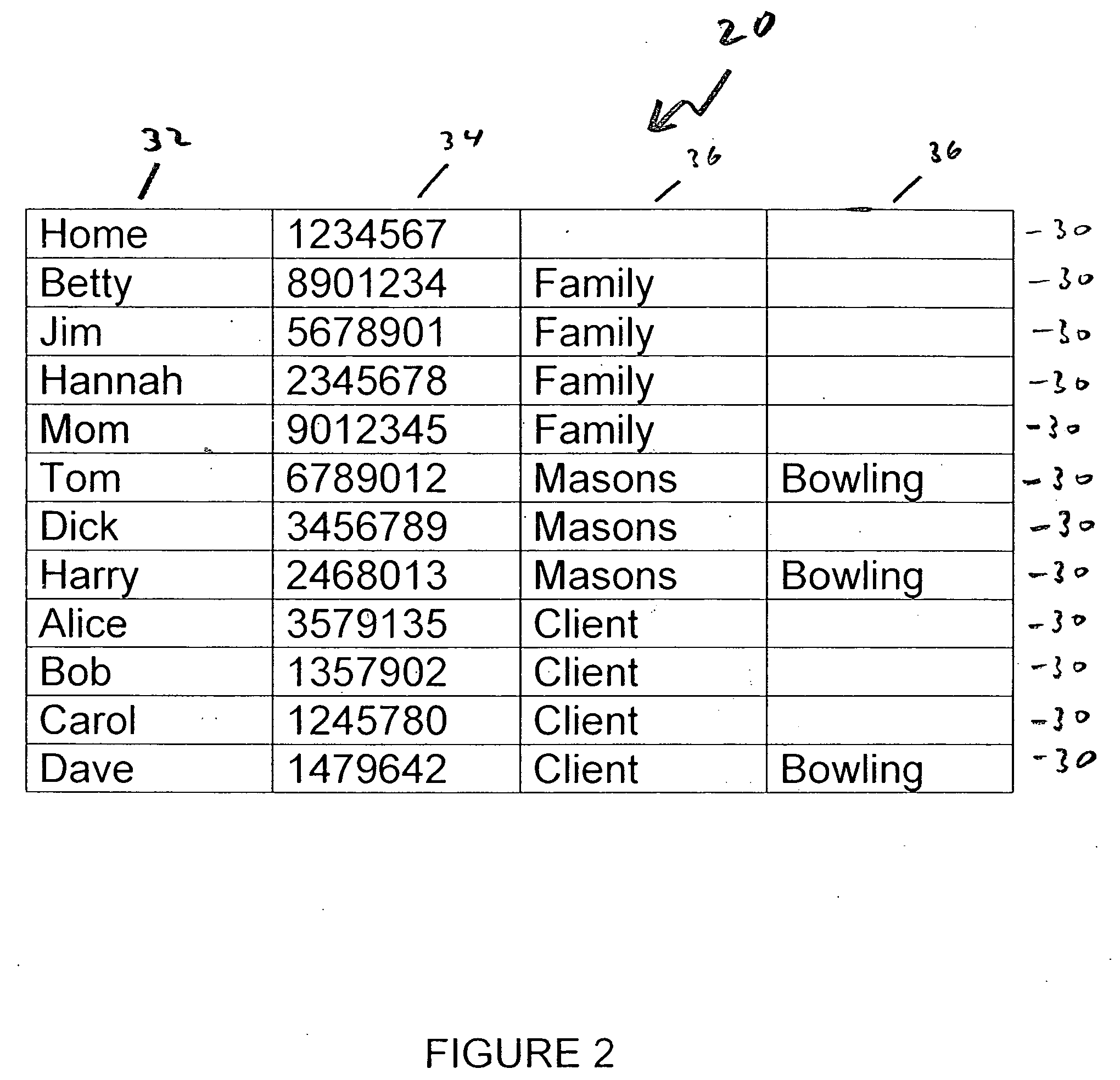Method and system for selective wireless communication
a wireless communication and wireless communication technology, applied in wireless communication, special services for subscribers, broadcast service distribution, etc., can solve the problems of no convenient way for friends to identify each other in a crowd, no convenient way for a mobile phone user to use his/her mobile phone, etc., and achieve the effect of more precision
- Summary
- Abstract
- Description
- Claims
- Application Information
AI Technical Summary
Benefits of technology
Problems solved by technology
Method used
Image
Examples
Embodiment Construction
[0045] The present invention is of a method and system by which a user of a mobile wireless communication device can be shown which members of a contact list are available for communication, either via the members' own mobile wireless communication devices or face-to-face. In particular, the indication can be restricted to only members of the contact list who have a specifically targeted attribute, such as belonging to a specific interest group.
[0046] The principles and operation of selective communication according to the present invention may be better understood with reference to the drawings and the accompanying description.
[0047] Referring now to the drawings, FIG. 1 is a high-level block diagram of a mobile wireless communication device 10 of the present invention. The high level components of device 10 include a transceiver 14, a processor 16, a memory 18, a keypad 24, a display screen 26 and a navigation unit 28, all intercommunicating via a common bus 12.
[0048] Transceiv...
PUM
 Login to View More
Login to View More Abstract
Description
Claims
Application Information
 Login to View More
Login to View More - R&D
- Intellectual Property
- Life Sciences
- Materials
- Tech Scout
- Unparalleled Data Quality
- Higher Quality Content
- 60% Fewer Hallucinations
Browse by: Latest US Patents, China's latest patents, Technical Efficacy Thesaurus, Application Domain, Technology Topic, Popular Technical Reports.
© 2025 PatSnap. All rights reserved.Legal|Privacy policy|Modern Slavery Act Transparency Statement|Sitemap|About US| Contact US: help@patsnap.com



